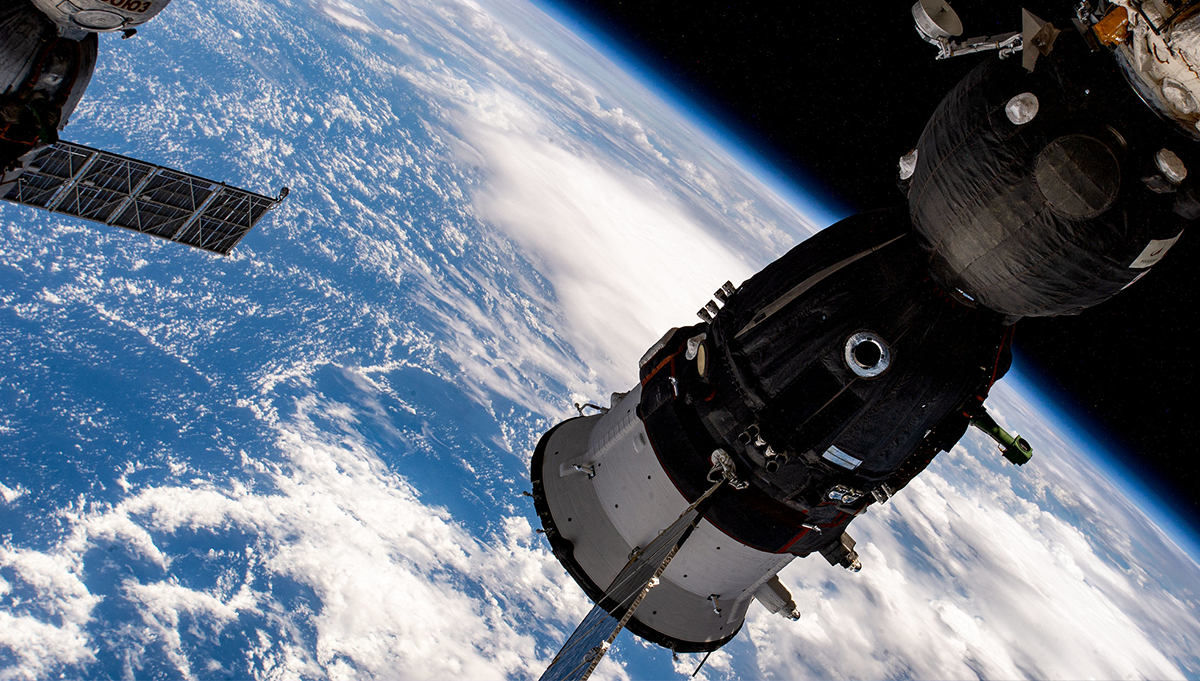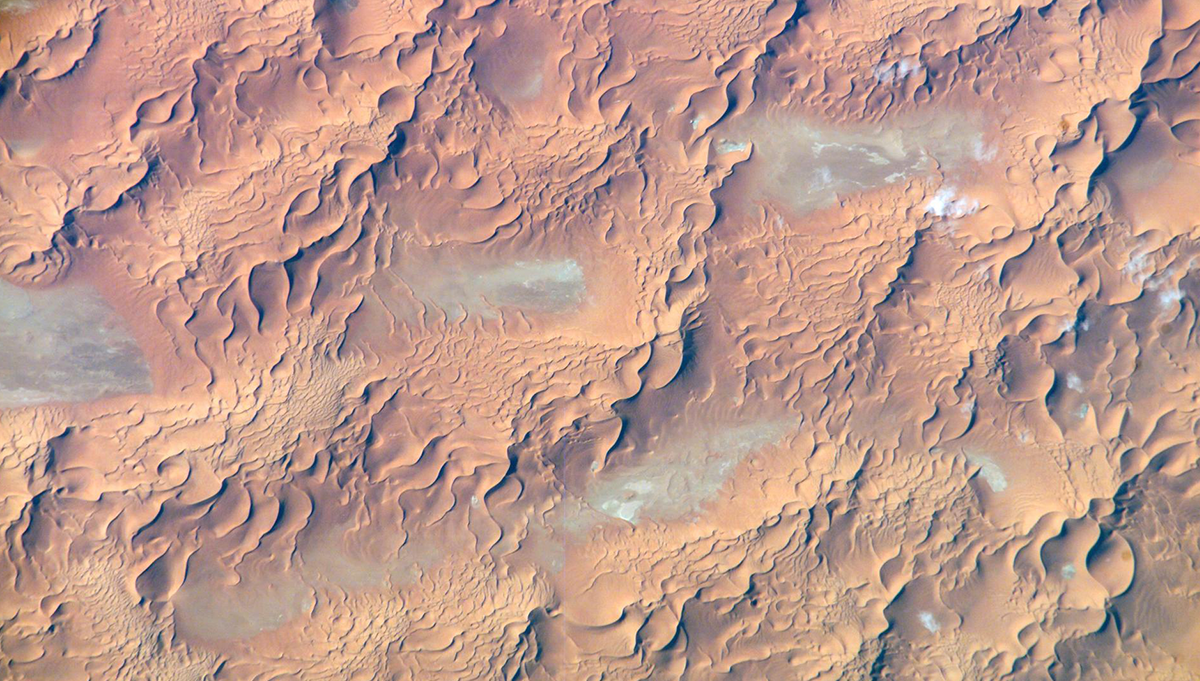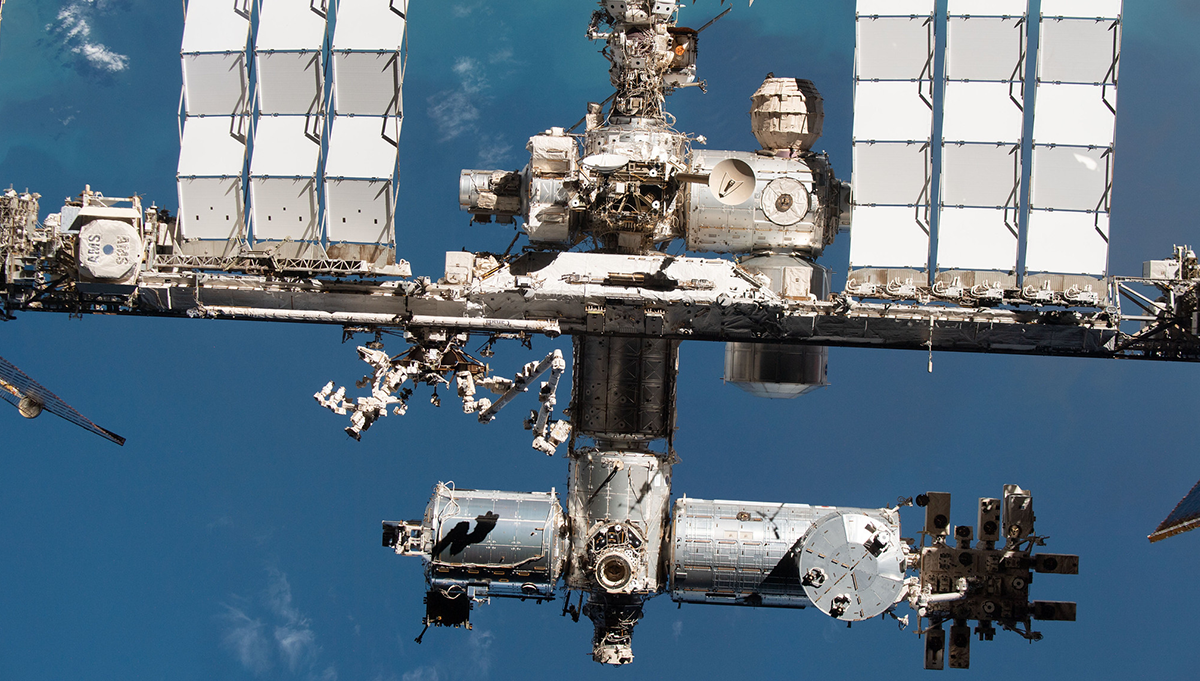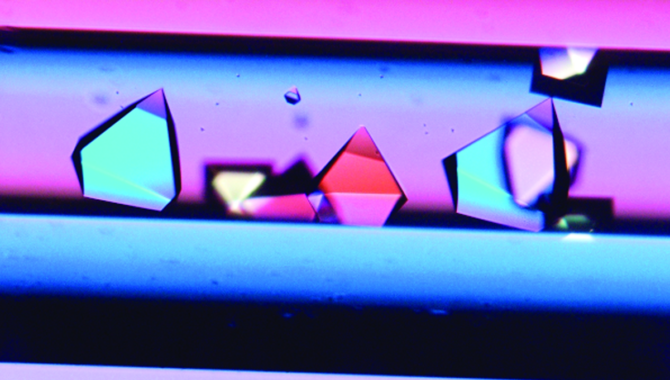
Researchers have discovered that growing crystals aboard the International Space Station allows for slower growth and higher quality crystals. This high-quality crystallization enables them to identify the structures of disease-causing proteins and to develop new medications and treatments. Credit: JAXA
Unique properties of microgravity lead to more effective drugs.
On March 1, 2016, NASA astronaut Scott Kelly climbed into a Soyuz spacecraft, leaving the International Space Station with Russian cosmonauts Mikhail Kornienko and Sergey Volkov for the raucous ride through Earth’s atmosphere and a landing in the deserts of Kazakhstan. Kelly, who had piloted one space shuttle mission and commanded a second, was now ending his second stay aboard the ISS. He had spent nearly a year in space in what is one of the most studied spaceflights in history.
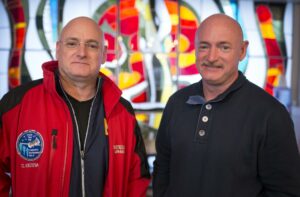
NASA Astronaut Scott Kelly, left, and his identical twin brother Mark Kelly, pose for a photograph Thursday, March 26, 2015 at the Cosmonaut Hotel in Baikonur, Kazakhstan. Credit: NASA/Bill Ingalls
Because Scott Kelly has an identical twin brother, retired astronaut Mark Kelly, his extended space flight presented 10 research teams with the unprecedented opportunity to gather data on the long-term effects of microgravity on the human body and compare it with a nearly identical control subject who had spent that time on Earth.
Researchers gathered a total of 183 blood samples from Scott and Mark, studying the effects of space flight on the human body on a genomic and physiological level. The research found that Scott Kelly experienced an array of changes during his prolonged spaceflight, most of which reversed when he returned to Earth. The results were published in 2019 in the journal Science, as an integrated paper combining the findings of all 10 teams.
The results caught the attention of Dr. Catriona Jamieson, Director of the Sanford Stem Cell Institute at the University of California, San Diego, who noted changes in Scott Kelly’s DNA and genetic expression, as well as the lengthening of his telomeres. Dr. Jamieson’s research interests include understanding the role mutant stem cells and progenitor cells can play in giving rise to cancer stem cells, and developing selective, less toxic therapies.
“[Scott Kelly] had inflammatory changes in his blood and preleukemic changes that made us worry, that maybe there’s not just accelerated aging of stem cells in space, but actually they may be starting to pick up some pre-malignant or preleukemic changes,” Jamieson said, speaking at a recent NASA teleconference. “So, we thought it may be a very good environment to study how our stem cells age under conditions of stress.”
“We observed not only accelerated stem cell aging, but also some concerning preleukemic changes.”
Jamieson led a team that conducted four missions to the International Space Station with implementation partner Space Tango to study how stem cells age in microgravity and to identify the point at which they malfunction and begin to acquire cancerous traits. The team used aged normal bone marrow and nano bioreactors. These nano bioreactors are small pediatric blood bags containing [an absorbable gelatin] sponge seeded with the stem cell stroma or microenvironment, topped with stem cells equipped with a fluorescent reporter.
“We observed not only accelerated stem cell aging, but also some concerning preleukemic changes,” Jamieson said.
“Then we thought, what if we send full-blown cancer into space? We made what are called tumor organoids or mini tumor models. We sent those up into space with our implementation partner, Axiom. And Axiom Space helped us to collect images on the International Space Station …,” Jamieson said. “In those three experiments we saw that cancer can triple in size in just 10 days on the International Space Station. It’s an accelerating environment. So, we have this new insight into how cancer clones itself and then we’ve been able to work on a kill switch that prevents [it].”

In August 2001, principal investigator Jeanne Becker sent human ovarian tumor cells to the International Space Station (ISS) aboard the STS-105 mission. The tumor cells were cultured in microgravity for a 14 day growth period and were analyzed for changes in the rate of cell growth and synthesis of associated proteins. In addition, they were evaluated for the expression of several proteins that are the products of oncogenes, which cause the transformation of normal cells into cancer cells. This photo, which was taken by astronaut Frank Culbertson who conducted the experiment for Dr. Becker, shows two cell culture bags containing LN1 ovarian carcinoma cell cultures. Credits: NASA/Frank Culbertson
The roots of today’s cutting edge medical research aboard the ISS trace back to the Space Shuttle program. NASA administrator Bill Nelson recalled in the teleconference how he grew protein crystals as the top priority of his experiments on STS-61-C. Even using equipment that is crude by today’s standards, the crystals grown in microgravity during the mission were larger and purer than those grown on Earth.
Teams today are also focusing on protein crystal growth, as well as nanoparticle drug delivery, tissue engineering, regenerative medicine, and stem cell research that benefits from the unique properties of microgravity in space, according to Dr. Michael Roberts, chief scientific officer of the International Space Station National Laboratory.
“In the absence of gravity, in the free fall environment that exists on the International Space Station, there is an absence of buoyancy driven convection. The heavier stuff will not settle out to the bottom in liquids, the lighter stuff won’t always float to the top. That enables biological systems at multiple levels, or whole organisms—including humans—to respond to that change in environment,” Roberts said at the teleconference.

Proteins are the building blocks of our bodies and the living world around us. Within our bodies proteins make it possible for red blood cells to carry oxygen throughout the body. Others help transmit nerve impulses so we can hear, smell and feel the world around us. While others play a crucial role in preventing or causing disease. If the structure of a protein is known, then companies can develop new or improved drugs to fight the disease of which the protein is a part. To determine protein structure, researchers must grow near-perfect crystals of the protein. On Earth convection currents, sedimentation and other gravity-induced phenomena hamper crystal growth efforts. In microgravity researchers can grow near-perfect crystals in an environment free of these effects. Credit: NASA
The research laboratories of pharmaceutical company Merck collaborated with the ISS National Laboratory to perform crystallization experiments with the cancer drug pembrolizumab, known by the trade name Keytruda®. The experiments capitalized on the reduced sedimentation and convection of liquids in microgravity to produce crystalline suspensions with highly uniform particle size distribution. The team was then able to identify production technologies to replicate these results on Earth.
“So what Merck was able to accomplish in the unique environment of space with this prolonged exposure to microgravity, was a way to increase the safety and efficacy of this drug by exploiting protein crystal growth in microgravity,” Roberts said. “Multiple companies are exploiting again, the access to microgravity to improve their ability to manufacture these nanoparticles so that we can more reliably and safely deliver drugs to their target and limit the amount of side effects that occur from them.”
Jamieson has had promising results from the ISS with the cancer drug Rebecsinib, working with astronauts on both Axiom Mission 2 and Axiom Mission 3, private crewed spaceflights that docked with the ISS. The drug targets inflammatory signaling to a cancer cloning gene known as ADAR1. Based on tests on Axiom Mission 3, Jamieson said, Rebecsinib appears to have great potential for stopping and even reversing the ADAR1 hyper-editing that leads from non-invasive pre-cancer to invasive cancer.
“So, the future is bright. I think there’s a lot that we can do together. You work with people who are wicked smart, as they say in Boston, and things tend to work out,” Jamieson said. “We’re thrilled to be able to work with NASA and hope that other people also have this great privilege of doing that.”






